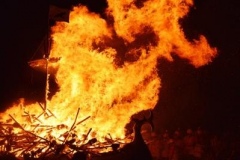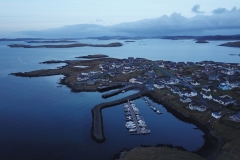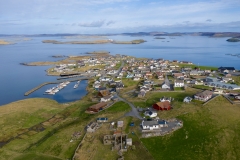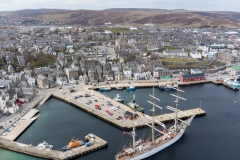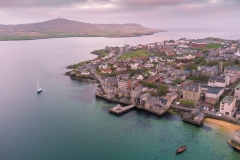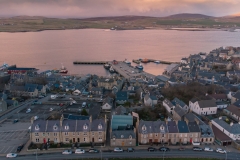Welcoming 1000’s every year, Shetland’s beautiful coastlines enclose a rich heritage and history that the inhabitants of the island celebrate throughout the year. From the season of Fire Festival’s otherwise known as Up Helly Aa through to the Folk Festival, Wool Week, and our annual festival of food, there is plenty to visit and experience throughout the year.
Away from such occasions, across Shetland’s 100 or so islands, there are archaeological sites dating back to the Picts & Vikings, including Jarlshoff, Moussa Broch, Clickimin Broch and the Unst Viking Centre in the very north.
Away from our the history that engulfs Shetland’s modern culture, Shetland’s wildlife also make the islands the destination of choice from explorers from around the world. From puffins & gannets, to seals and orcas, never mind the lambs, ponies and everything else in between!
At Britain’s most northern point, Shetland lies in the middle of the fierce North Sea. Once conquered by the Scandinavian Viking’s in the early 8th century, Shetland is now home to over 20,000 people across over 100 islands, many of which now lay uninhabited.
Lerwick
Staying with us at The Queens Hotel, you are in the heart of Lerwick’s ‘Old Town’.
With restaurants, bars, and shops on your doorstep you can get immersed with town life here in Shetland. Along Da Street you will find the likes of the Lounge Bar, Da Steakhoose, No.88, Harry’s Department Store, Aurora, and much more. You can find a fuller list of what is within The Grand’s proximity on the Living Lerwick website.
A stones throw from your base at the Queens would be the home of BBC Shetland‘s DI Jimmy Perez, the hotel used to be a lodberries itself.
The lodberries of the past come with a lot of history.
Lerwick as a growing town in the 1600’s, would be the port of call for many visiting Dutch & European fishermen and with them would often illicit goods, such as alcohol. Of course, they would arrive to the lodberries along Lerwick coast and these illegal goods would be smuggled through the lodberries and the many tunnel systems beneath the streets and be drunken by the people of Lerwick and their visiting tradesmen. With such an influx of alcohol, Lerwick was particularly lawless and a decree would come from Scalloway (the ancient capital) that would see a ban of all trading with the small port town and Lerwick would be all but burnt to the ground.
Lerwick would find its way back however, and a century later Lerwick would take the crown of the Capital from Scalloway as it grew back into a well-respected and noble town!
Despite being in modern times, the history of part is still ever present in Lerwick.
On the opposite end of Da Street you can find Lerwick’s Town Hall, which houses councillors full-time as well as regular functions.
At the time of its construction in the late 1800’s, residents of Lerwick were bemused as it faced fields & crofts for miles, with many arguing that it should be facing inward to the town. However, the councillor had envisioned a growing town that would span for miles and over a century on, it would seem he was right. The winding and steep lanes of Lerwick are that way as people would setup shop and build wherever they could before some official control came into place.
It is said you can walk through history from Da Street and ‘Old Lerwick’ to the Victorian-style buildings at King Harold Street and then onto the crescents and further on Sound Brae that overlooks the the town back over!
Useful Links:

